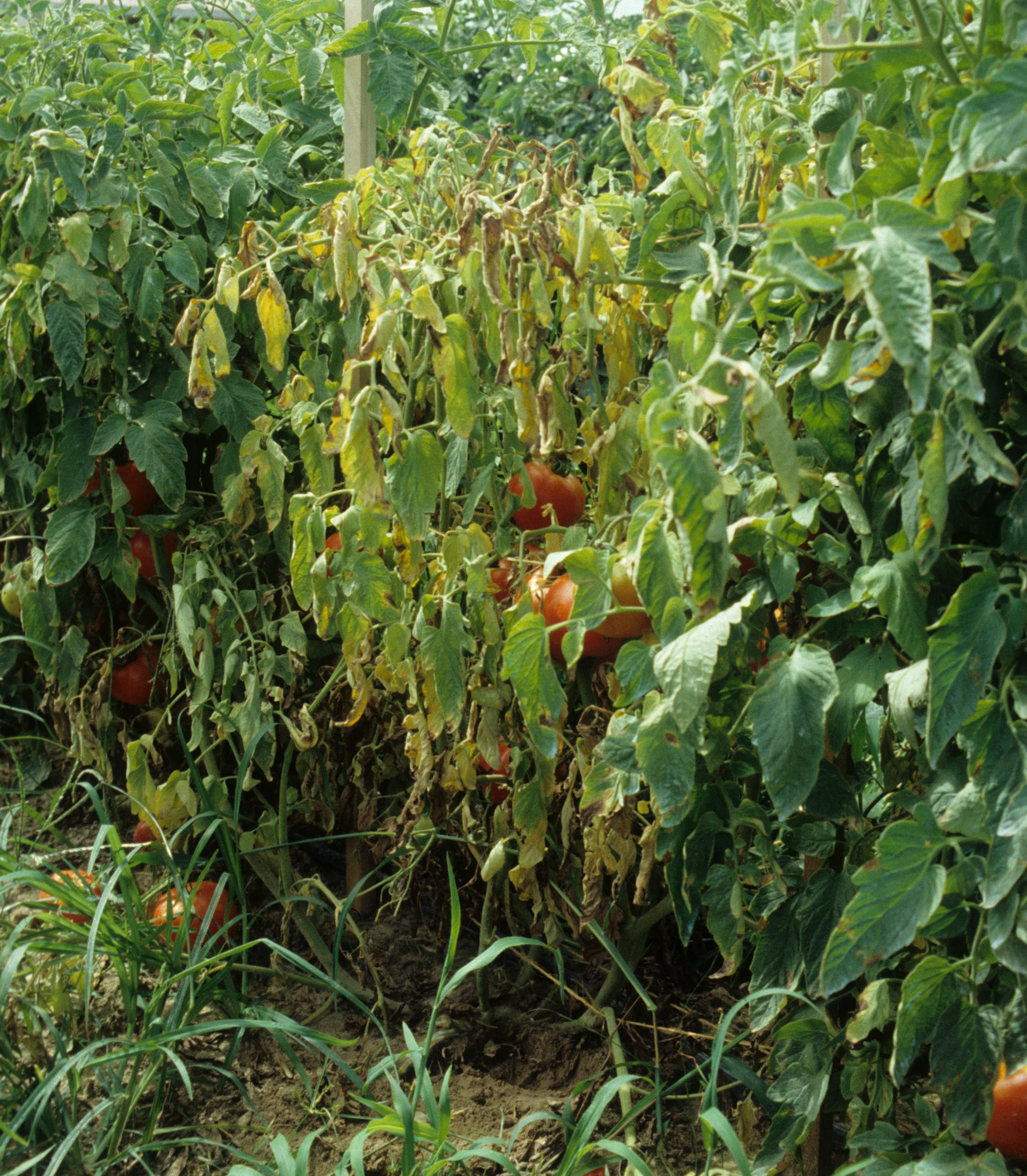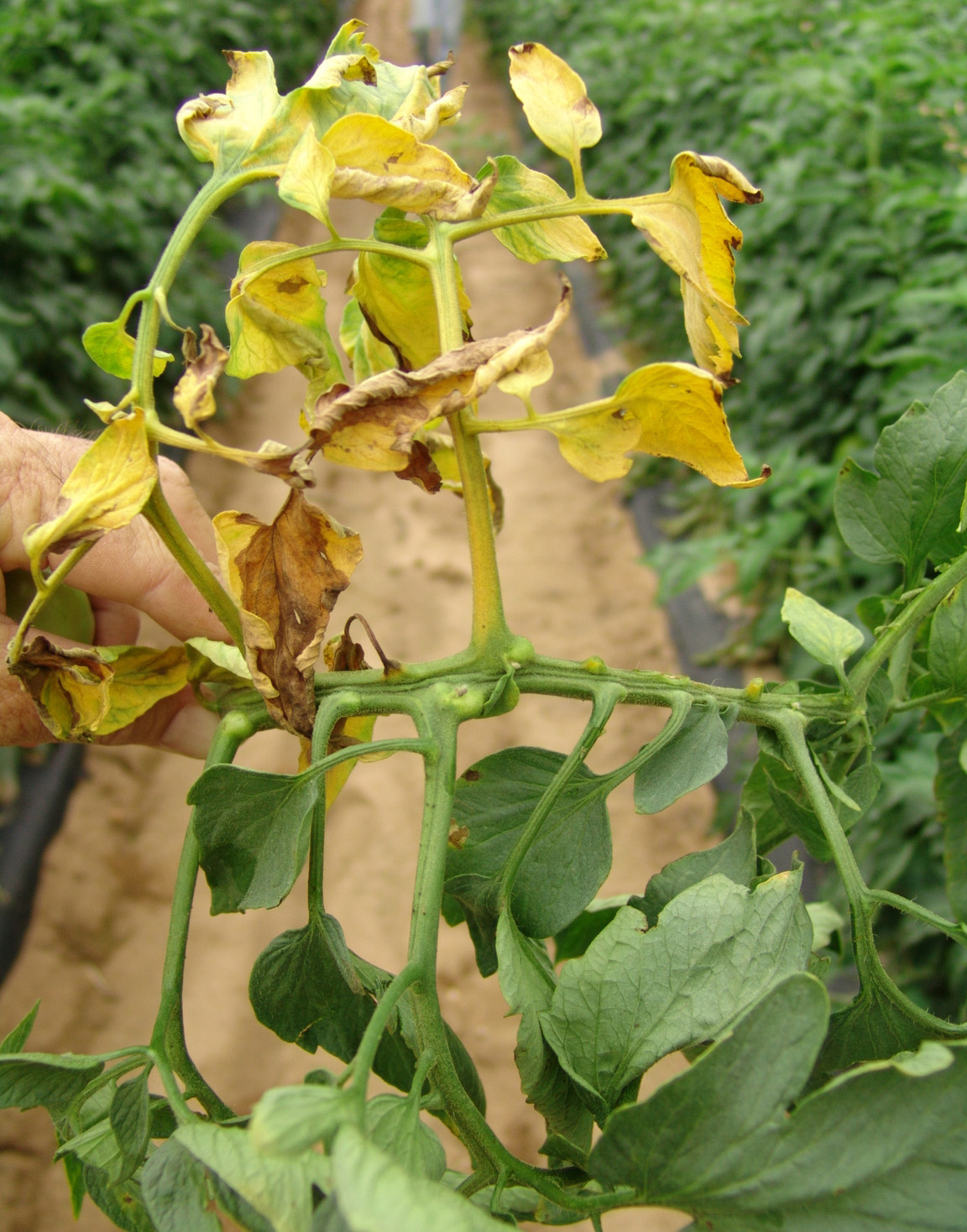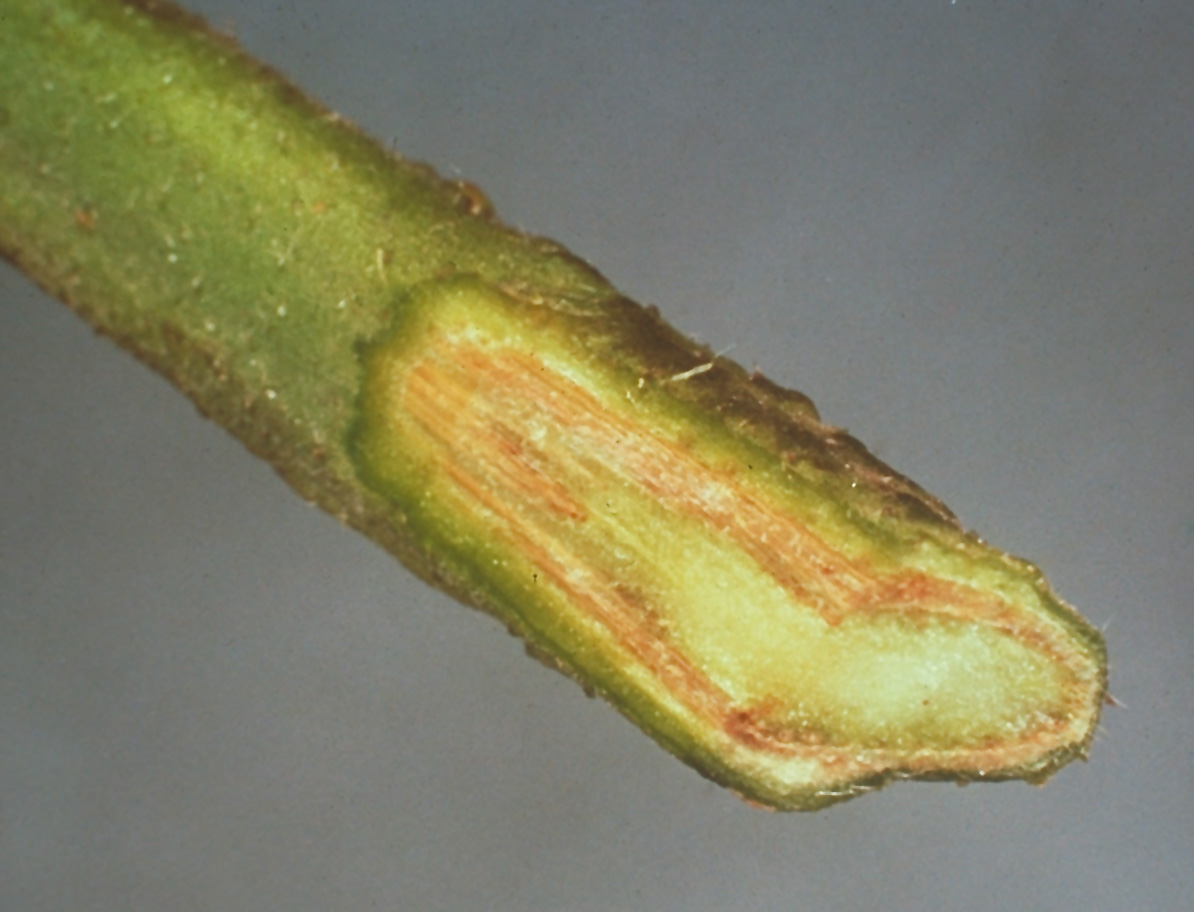Fusarium Wilt of Tomato
Return to Diseases
Fusarium wilt (Fusarium oxysporum f. sp. lycopersici) symptoms include stunting, yellowing of older leaves, and wilting. Wilting may initially occur on one side of plants and is often more severe during the hottest time of the day. Plants decline over a period of days or weeks, and eventually die. Vascular tissue (xylem) in infected stems turns brown—a key diagnostic feature. Disease can be problematic when conditions are hot and dry and is usually more severe if associated with infestations of root-knot nematode.

Fusarium wilt.
(Photo: Edward Sikora, Auburn University, Bugwood.org)

Fusarium wilt.
(Photo: Gerald Holmes, Strawberry Center, Cal Poly San Luis Obispo, Bugwood.org)

Fusarium wilt vascular browning.
(Photo: USDA Cooperative Extension Slide Series, Clemson University, Bugwood.org)
Management:
- Rotate to non-host crops for at least three years if disease is severe
- Select resistant cultivars (effective only if disease pressure is low)
- Plant pathogen-free seed and transplants
- Manage nematodes
- Promptly remove and destroy diseased plant material
- Destroy crop residues after harvest
- Deep plow to bury residual inoculum
- Avoid movement of infested soil to clean fields
